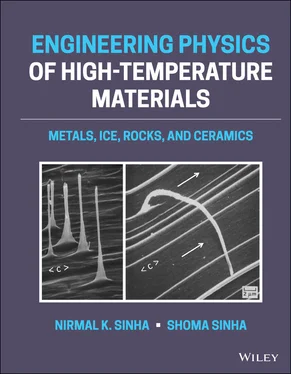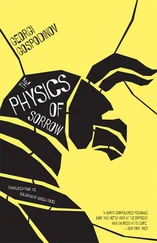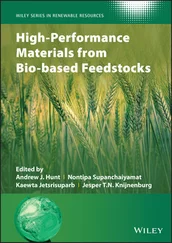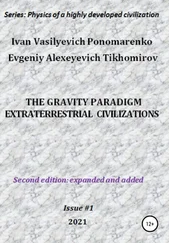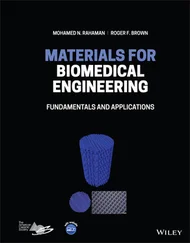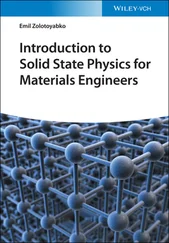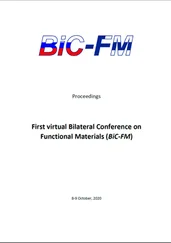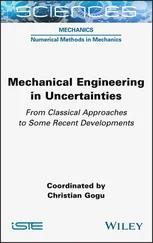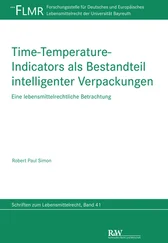Nirmal K. Sinha - Engineering Physics of High-Temperature Materials
Здесь есть возможность читать онлайн «Nirmal K. Sinha - Engineering Physics of High-Temperature Materials» — ознакомительный отрывок электронной книги совершенно бесплатно, а после прочтения отрывка купить полную версию. В некоторых случаях можно слушать аудио, скачать через торрент в формате fb2 и присутствует краткое содержание. Жанр: unrecognised, на английском языке. Описание произведения, (предисловие) а так же отзывы посетителей доступны на портале библиотеки ЛибКат.
- Название:Engineering Physics of High-Temperature Materials
- Автор:
- Жанр:
- Год:неизвестен
- ISBN:нет данных
- Рейтинг книги:3 / 5. Голосов: 1
-
Избранное:Добавить в избранное
- Отзывы:
-
Ваша оценка:
- 60
- 1
- 2
- 3
- 4
- 5
Engineering Physics of High-Temperature Materials: краткое содержание, описание и аннотация
Предлагаем к чтению аннотацию, описание, краткое содержание или предисловие (зависит от того, что написал сам автор книги «Engineering Physics of High-Temperature Materials»). Если вы не нашли необходимую информацию о книге — напишите в комментариях, мы постараемся отыскать её.
Discover a comprehensive exploration of high temperature materials written by leading materials scientists Engineering Physics of High-Temperature Materials: Metals, Ice, Rocks, and Ceramics
Engineering Physics of High-Temperature Materials (EPHTM)
Engineering Physics of High-Temperature Materials
Engineering Physics of High-Temperature Materials: Metals, Ice, Rocks, and Ceramics
Engineering Physics of High-Temperature Materials — читать онлайн ознакомительный отрывок
Ниже представлен текст книги, разбитый по страницам. Система сохранения места последней прочитанной страницы, позволяет с удобством читать онлайн бесплатно книгу «Engineering Physics of High-Temperature Materials», без необходимости каждый раз заново искать на чём Вы остановились. Поставьте закладку, и сможете в любой момент перейти на страницу, на которой закончили чтение.
Интервал:
Закладка:
4 Chapter 3 Figure 3.1 (a) Three‐dimensional drawing of an idealized lattice structure s... Figure 3.2 Schematic of etch pitting along dislocation core and SEM of repli... Figure 3.3 Schematic of etch pitting along dislocation core and SEM of repli... Figure 3.4 Nonbasal (pointing upward) and basal (horizontal) dislocations.... Figure 3.5 Optical images of triple points in transparent, pure columnar‐gra... Figure 3.6 SEM images of etched and replicated surfaces of ice. (a) Hexagona... Figure 3.7 SEM images of etched and replicated surfaces of ice. (a) Few basa... Figure 3.8 SEM images of etched and replicated surfaces of ice. (a) Arrested... Figure 3.9 SEM of etch pits with core whiskers in slip bands and multitude o... Figure 3.10 Four types of ice structure. Figure 3.11 NRCC large‐field polariscope for observations of circular thin s... Figure 3.12 Images from the large field‐of‐view NRCC polariscope. (a) Concen... Figure 3.13 Orientation of ion‐exchanged cracks on the surface of a 25 mm wi... Figure 3.14 Sublimation pits in ice. Note especially the shape of the pits f... Figure 3.15 Optical micrographs of replicated surfaces exhibiting two differ...Figure 3.16 SEM showing many shallow etch tracts for rapidly moving traffic ...Figure 3.17 Micrographs of ice replicas. (a) Optical micrograph exhibiting a...Figure 3.18 Sketch of relevant parameters for etching in air/gas environment...Figure 3.19 Sketch of a thermal‐etching box with transparent glass bottom an...Figure 3.20 Optical micrograph showing grain‐size distribution in spat‐coole...Figure 3.21 Optical micrograph of a horizontal thin section (prepared by DMT...Figure 3.22 Optical micrograph of microtomed and thermally etched surface, n...Figure 3.23 Thermally etched surface, normal to the long axis of a grain of ...Figure 3.24 Optical image of thermally etched biaxially deformed S‐3 sea ice...
5 Chapter 4Figure 4.1 Experimentally determined and calculated (solid lines) dependence...Figure 4.2 Frequency dependence of the effective elastic modulus of cast, HI...Figure 4.3 Stress–strain hysteresis loop for SRRT on nickel‐base Waspaloy at...Figure 4.4 Stress–strain hysteresis loop for SRRT for a creep time of 300 s ...Figure 4.5 Temperature dependence of “static” Young's modulus of HIPed and h...Figure 4.6 Thermal strain in nickel‐base superalloy IN‐738LC in the temperat...Figure 4.7 Four‐point bending arrangements. (a) Home‐made single‐lever loadi...Figure 4.8 Interference patterns, produced by a Babinet compensator in monoc...Figure 4.9 Stress distributions in bending for nonlinear viscoelastic materi...Figure 4.10 Specimen with five spot‐welded thermocouples in a three‐zone fur...Figure 4.11 Front and rear views of SRRT test setup showing a three‐zone fur...Figure 4.12 SRRT of 724 MPa and 200 s at 732 °C (1005K) for Waspaloy forging...Figure 4.13 Schematics of the stress relaxation process for an imposed const...Figure 4.14 Relaxation of stress (stress‐induced birefringence) in a glass l...Figure 4.15 SRRT result for Waspaloy forgings. (a) For 574 MPa, about 80% of...Figure 4.16 Densification in snow. (a) Microstructure of aircraft‐compacted ...Figure 4.17 Rectangular specimen (250 × 100 × 50 mm) of translucent columnar...Figure 4.18 Evolution of through‐thickness profile of stress (birefringence)...Figure 4.19 Thermal tempering in 6.5 mm thick glass plates. (a) Evolution of...Figure 4.20 NRCC‐BHI schematics. (a) Overview; (b) NRC‐BHI inside a 150 mm d...Figure 4.21 The senior author with the entire NRCC‐BHI test system at “Hobso...Figure 4.22 NRCC‐BHI tests in S‐1 ice. (a) Scattered light and (a′) polarize...
6 Chapter 5Figure 5.1 Creep of structurally stabilized plate glass at 547.5 °C in four‐...Figure 5.2 Creep of plate glass for 80, 200, and 400 kg cm −2at severa...Figure 5.3 Normalized and temperature compensated creep in glass reduced to ...Figure 5.4 Application of the shift functions to individual SRT results: (a)...Figure 5.5 Creep and recovery of Aheim dunite at (a) 1473 K and initial stre...Figure 5.6 Variation of initial strain with applied stress at 233 K (0.85 T mFigure 5.7 Creep and recovery of transversely isotropic (orthotropic) S‐2 ic...Figure 5.8 Primary‐creep of S‐2 ice for 0.49 MPa (5.2 × 10 −5 E ) reduce...Figure 5.9 Calculated creep rate versus stress at different creep times appr...Figure 5.10 Calculated dependence of  on total strain ε tfor various g...Figure 5.11 Calculated strain dependence of the ratio of delayed elastic (gb...Figure 5.12 Stress dependence of the ratio of delayed (gbs) to total strain,...Figure 5.13 Grain‐size dependence of
on total strain ε tfor various g...Figure 5.11 Calculated strain dependence of the ratio of delayed elastic (gb...Figure 5.12 Stress dependence of the ratio of delayed (gbs) to total strain,...Figure 5.13 Grain‐size dependence of  /
/  at loading time of 10 4s, computed...Figure 5.14 SRRTs for one specimen (A) of forged Ti‐6246 (Ti‐6Al‐2Sn‐4Zr‐6Mo...Figure 5.15 Four ε dand ε vdata and recorded creep strain (from ε ...Figure 5.16 SRRT curves for one specimen, A, of Ti‐6246 at 873 K (0.45 T m) f...Figure 5.17 Dependence of viscous strain rate and des during primary creep o...Figure 5.18 Optical micrograph of Waspaloy forgings.Figure 5.19 SRRT of 390 MPa and 350 MPa for Waspaloy at 1005 K (0.62 T m). (a...Figure 5.20 SRRT for t rlxof 200 s for 724 MPa (4.19 × 10 −3 E ) at 1005...Figure 5.21 Stress dependence of ε d/ ε vfrom SRRT on a single speci...Figure 5.22 Dependence of des on Ln( t rlx+ 1)( σ / E ) s, for E = 172.66 GPa...Figure 5.23 Stress dependence of “average viscous strain rate” during primar...Figure 5.24 A comparison of experimental and calculated results for CS creep...Figure 5.25 SRRT curves on a single specimen of IN‐738LC at 1273 K for 161 M...Figure 5.26 SRRT curve for IN‐738LC (a) t rlxof 100 s under 497 MPa at 1123 ...Figure 5.27 Dependence of des, ε don Ln( t rlx+ 1)( σ / E ) s , for s = 4...Figure 5.28 Stress dependence of viscous strain rate,
at loading time of 10 4s, computed...Figure 5.14 SRRTs for one specimen (A) of forged Ti‐6246 (Ti‐6Al‐2Sn‐4Zr‐6Mo...Figure 5.15 Four ε dand ε vdata and recorded creep strain (from ε ...Figure 5.16 SRRT curves for one specimen, A, of Ti‐6246 at 873 K (0.45 T m) f...Figure 5.17 Dependence of viscous strain rate and des during primary creep o...Figure 5.18 Optical micrograph of Waspaloy forgings.Figure 5.19 SRRT of 390 MPa and 350 MPa for Waspaloy at 1005 K (0.62 T m). (a...Figure 5.20 SRRT for t rlxof 200 s for 724 MPa (4.19 × 10 −3 E ) at 1005...Figure 5.21 Stress dependence of ε d/ ε vfrom SRRT on a single speci...Figure 5.22 Dependence of des on Ln( t rlx+ 1)( σ / E ) s, for E = 172.66 GPa...Figure 5.23 Stress dependence of “average viscous strain rate” during primar...Figure 5.24 A comparison of experimental and calculated results for CS creep...Figure 5.25 SRRT curves on a single specimen of IN‐738LC at 1273 K for 161 M...Figure 5.26 SRRT curve for IN‐738LC (a) t rlxof 100 s under 497 MPa at 1123 ...Figure 5.27 Dependence of des, ε don Ln( t rlx+ 1)( σ / E ) s , for s = 4...Figure 5.28 Stress dependence of viscous strain rate,  v, during “primary cr...Figure 5.29 Calculated stress–strain diagrams for Ti‐6246 at 1005 K for a fe...Figure 5.30 Predicted strain‐rate dependence of 0.2% offset yield stress for...Figure 5.31 Calculated total and three components of strain for constant str...Figure 5.32 Calculated stress–strain diagrams for Waspaloy at 1005 K for a f...Figure 5.33 Predicted strain‐rate dependence of 0.2% offset yield stress for...Figure 5.34 Calculated total and three components of strain for constant str...Figure 5.35 Predicted strain‐rate dependence of the total strain and the com...Figure 5.36 Strain‐rate dependence of ratio of ε d,Y, and ε v,Y(at ...Figure 5.37 Schematic representations of shearing in precipitation‐hardened,...Figure 5.38 Cracks initiation at casting pores in CMSX‐10. (a) Local stress ...Figure 5.39 Four SRRT curves with recovery and two creep‐fracture result for...Figure 5.40 Corresponding data for the CMSX‐10 SRRT curve at 1073 K, 700 MPa...Figure 5.41 Delayed elastic strain recovery immediately after elastic recove...Figure 5.42 Long‐term (about 87 days) des recovery after elastic recovery on...Figure 5.43 Temperature dependence of strain components (note the log scale)...Figure 5.44 CMSX‐10 test at an initial stress of 700 MPa and 1223 K (a) stra...Figure 5.45 Temperature dependence of tertiary stage strain rate versus true...Figure 5.46 Calculated results for CMSX‐10 for initial stress of 700 MPa at ...Figure 5.47 Fractured specimens after creep‐fracture tests on [001]‐oriented...Figure 5.48 Strain–time curves for five creep‐fracture tests on [001]‐orient...Figure 5.49 Creep‐fracture tests on [001]‐oriented CMSX‐10 single crystal at...Figure 5.50 True stress versus mcr (solid circles) and tertiary strain rate ...Figure 5.51 Calculated results for creep‐fracture tests of CMSX‐10 at 1173 K...Figure 5.52 Plots of
v, during “primary cr...Figure 5.29 Calculated stress–strain diagrams for Ti‐6246 at 1005 K for a fe...Figure 5.30 Predicted strain‐rate dependence of 0.2% offset yield stress for...Figure 5.31 Calculated total and three components of strain for constant str...Figure 5.32 Calculated stress–strain diagrams for Waspaloy at 1005 K for a f...Figure 5.33 Predicted strain‐rate dependence of 0.2% offset yield stress for...Figure 5.34 Calculated total and three components of strain for constant str...Figure 5.35 Predicted strain‐rate dependence of the total strain and the com...Figure 5.36 Strain‐rate dependence of ratio of ε d,Y, and ε v,Y(at ...Figure 5.37 Schematic representations of shearing in precipitation‐hardened,...Figure 5.38 Cracks initiation at casting pores in CMSX‐10. (a) Local stress ...Figure 5.39 Four SRRT curves with recovery and two creep‐fracture result for...Figure 5.40 Corresponding data for the CMSX‐10 SRRT curve at 1073 K, 700 MPa...Figure 5.41 Delayed elastic strain recovery immediately after elastic recove...Figure 5.42 Long‐term (about 87 days) des recovery after elastic recovery on...Figure 5.43 Temperature dependence of strain components (note the log scale)...Figure 5.44 CMSX‐10 test at an initial stress of 700 MPa and 1223 K (a) stra...Figure 5.45 Temperature dependence of tertiary stage strain rate versus true...Figure 5.46 Calculated results for CMSX‐10 for initial stress of 700 MPa at ...Figure 5.47 Fractured specimens after creep‐fracture tests on [001]‐oriented...Figure 5.48 Strain–time curves for five creep‐fracture tests on [001]‐orient...Figure 5.49 Creep‐fracture tests on [001]‐oriented CMSX‐10 single crystal at...Figure 5.50 True stress versus mcr (solid circles) and tertiary strain rate ...Figure 5.51 Calculated results for creep‐fracture tests of CMSX‐10 at 1173 K...Figure 5.52 Plots of  (for 500, 550, and 600 MPa),
(for 500, 550, and 600 MPa),  (for 660 MPa), and
(for 660 MPa), and  (f...Figure 5.53 Strain rate versus actual stress for CMSX‐10 at 1123 K for 580 M...Figure 5.54 Dependence of total engineering strain at fracture and fracture ...Figure 5.55 CMSX‐10 specimen tested at 1173 K and 700 MPa (a) diameter acros...Figure 5.56 Eccentricity of the cross‐section along the length of the five f...Figure 5.57 Distribution of cross‐sectional area for the five creep ruptured...Figure 5.58 Stress distribution along the gauge length at the time of fractu...Figure 5.59 Dependence of local and estimated average stress at fracture on ...Figure 5.60 Influence of orientation on the constant load stress‐rupture pro...Figure 5.61 Strain rate as a function of true stress up to fracture for <001...Figure 5.62 Strain rate versus actual stress for CMSX‐4 for 1000 °C. (a) 200...Figure 5.63 Strain rate versus actual stress from constant load creep data o...Figure 5.64 True strain rate versus true stress for TMS 75 for 900 °C, data ...Figure 5.65 Strain rate versus actual stress for single crystal SRR99 for 98...
(f...Figure 5.53 Strain rate versus actual stress for CMSX‐10 at 1123 K for 580 M...Figure 5.54 Dependence of total engineering strain at fracture and fracture ...Figure 5.55 CMSX‐10 specimen tested at 1173 K and 700 MPa (a) diameter acros...Figure 5.56 Eccentricity of the cross‐section along the length of the five f...Figure 5.57 Distribution of cross‐sectional area for the five creep ruptured...Figure 5.58 Stress distribution along the gauge length at the time of fractu...Figure 5.59 Dependence of local and estimated average stress at fracture on ...Figure 5.60 Influence of orientation on the constant load stress‐rupture pro...Figure 5.61 Strain rate as a function of true stress up to fracture for <001...Figure 5.62 Strain rate versus actual stress for CMSX‐4 for 1000 °C. (a) 200...Figure 5.63 Strain rate versus actual stress from constant load creep data o...Figure 5.64 True strain rate versus true stress for TMS 75 for 900 °C, data ...Figure 5.65 Strain rate versus actual stress for single crystal SRR99 for 98...
Интервал:
Закладка:
Похожие книги на «Engineering Physics of High-Temperature Materials»
Представляем Вашему вниманию похожие книги на «Engineering Physics of High-Temperature Materials» списком для выбора. Мы отобрали схожую по названию и смыслу литературу в надежде предоставить читателям больше вариантов отыскать новые, интересные, ещё непрочитанные произведения.
Обсуждение, отзывы о книге «Engineering Physics of High-Temperature Materials» и просто собственные мнения читателей. Оставьте ваши комментарии, напишите, что Вы думаете о произведении, его смысле или главных героях. Укажите что конкретно понравилось, а что нет, и почему Вы так считаете.
